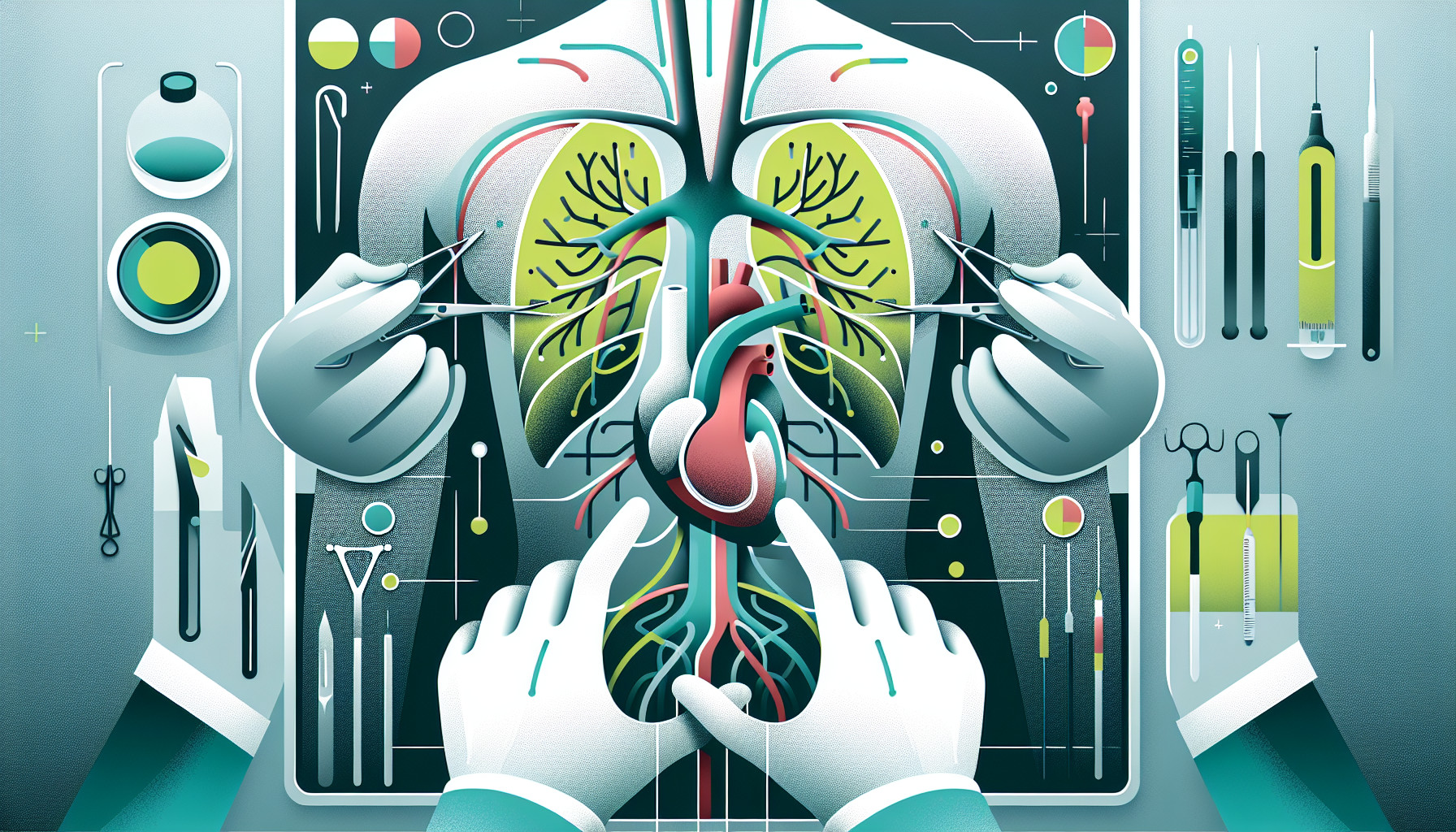Our Summary
This research paper discusses thoracic aortic aneurysms, which are serious health conditions that can lead to severe illness or death. There are different reasons why someone might get this condition, including genetic factors. The way these aneurysms show up in the body can vary a lot, which means doctors need to think carefully about the best treatment options for each person.
For a long time, surgery was the main way to treat these aneurysms, but this method can be risky and sometimes leads to further health problems or even death. Nowadays, a less invasive method called endovascular treatment is often the first choice for treating aneurysms in the descending part (lower part) of the thoracic aorta. This method involves using a special kind of graft (a piece of tissue or synthetic material) to repair the damaged area.
Thanks to improvements in graft technology, doctors are now using endovascular treatment more and more, even for complex procedures involving different parts of the aorta. However, there still isn’t a lot of data from clinical trials or long-term follow-up studies on how well these new methods work.
The hope is that as technology gets even better, we’ll be able to combine surgical and endovascular treatments in a way that gives patients the best chances of a good outcome. For example, this might be particularly helpful for people with conditions like Marfan syndrome, which can make thoracic aortic aneurysms more likely.
FAQs
- What are the common treatment options for thoracic aortic aneurysms?
- What is the role of endovascular approaches in the treatment of thoracic aortic aneurysms?
- Are there any long-term clinical outcomes from randomized trials for endovascular or hybrid repairs?
Doctor’s Tip
One helpful tip a doctor might tell a patient about aortic aneurysm repair is to closely follow post-operative instructions and attend all follow-up appointments. This is crucial for monitoring the success of the repair and ensuring that any potential complications are addressed promptly. Additionally, maintaining a healthy lifestyle with regular exercise, a balanced diet, and avoiding tobacco use can help improve overall cardiovascular health and reduce the risk of future aneurysm formation.
Suitable For
Patients who are typically recommended for aortic aneurysm repair include those with:
- Thoracic aortic aneurysms that are symptomatic or rapidly growing
- Aortic aneurysms that are causing symptoms such as chest or back pain, shortness of breath, or difficulty swallowing
- Aortic aneurysms that are at risk of rupture based on size, location, or other factors
- Patients with connective tissue disorders such as Marfan syndrome or Ehlers-Danlos syndrome, which are associated with an increased risk of aortic aneurysm formation
- Patients with a family history of aortic aneurysms or aortic dissections
- Patients with a history of aortic dissection or other aortic complications
- Patients with risk factors such as hypertension, smoking, or atherosclerosis that may increase their risk of developing aortic aneurysms
It is important for patients with aortic aneurysms to be evaluated by a multidisciplinary team of specialists, including cardiovascular surgeons, interventional cardiologists, and vascular surgeons, to determine the most appropriate treatment approach based on their individual risk factors and anatomy.
Timeline
Before aortic aneurysm repair:
- Patient may experience symptoms such as chest or back pain, shortness of breath, hoarseness, or difficulty swallowing.
- Diagnostic tests such as echocardiogram, CT scan, or MRI are performed to confirm the presence of an aortic aneurysm.
- Patient undergoes pre-operative evaluations and consultations with a cardiothoracic surgeon to discuss treatment options.
After aortic aneurysm repair:
- Patient undergoes the surgical or endovascular repair procedure to repair the aortic aneurysm.
- Recovery period in the hospital, which may include monitoring in the intensive care unit.
- Follow-up appointments with the healthcare team to monitor recovery and assess for any complications.
- Patient may be prescribed medications to manage pain, prevent infection, and control blood pressure.
- Long-term follow-up to monitor the repaired aortic aneurysm and assess for any recurrence or complications.
What to Ask Your Doctor
- What is the cause of my aortic aneurysm?
- What are the risks and benefits of surgical repair versus endovascular repair for my specific case?
- What is the success rate of the procedure you are recommending?
- What is the recovery process like after aortic aneurysm repair surgery?
- What are the potential complications or side effects of the procedure?
- Will I need to make any lifestyle changes after the surgery?
- How often will I need follow-up appointments or imaging studies to monitor my aortic aneurysm?
- Are there any alternative treatment options available for my condition?
- Are there any specific precautions I should take to prevent future aortic aneurysms?
- Are there any support groups or resources available for patients with aortic aneurysms?
Reference
Authors: Clare R, Jorgensen J, Brar SS. Journal: Curr Atheroscler Rep. 2016 Oct;18(10):60. doi: 10.1007/s11883-016-0612-3. PMID: 27663901
